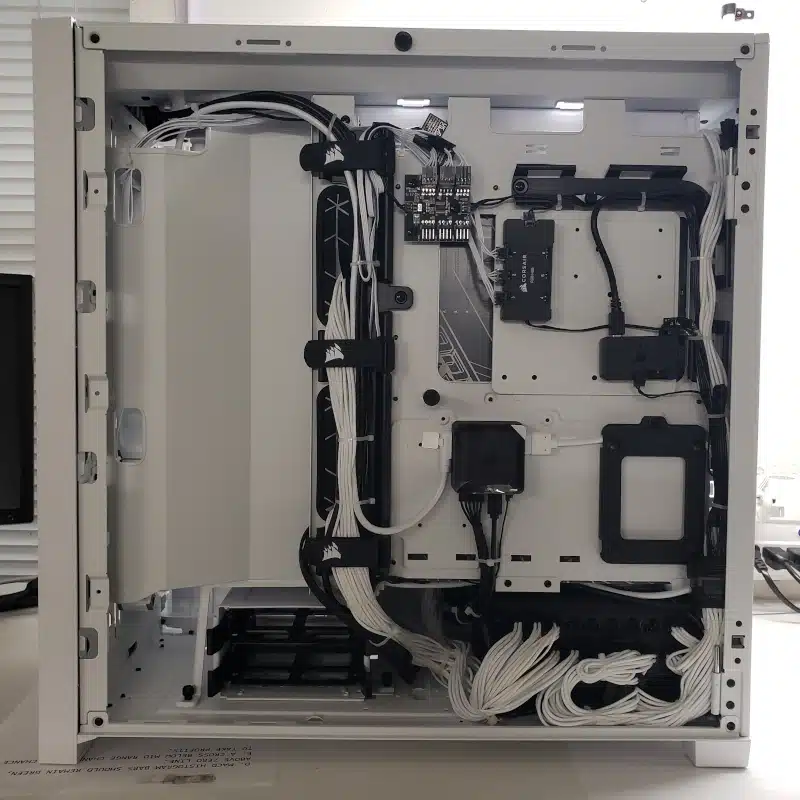Gaming PC cable management is essential for your gaming rig’s visual appeal and performance.
The Importance of Cable Management
Cable management in a gaming PC often gets overlooked, yet it plays a crucial role in aesthetics and functionality. Proper cable management not only enhances the appearance of your gaming setup but also improves airflow and makes maintenance easier. However, many gamers struggle with this task due to a lack of knowledge or tools. You can achieve a clean and organized setup by following a few simple steps and tips.
First, plan your cable routes before installing components. This step saves time and prevents frustration later. Knowing where each cable will go helps you avoid tangling and ensures all cables reach their respective ports without stretching. Also, consider using cable ties, Velcro straps, or cable management kits. These tools help secure cables neatly and keep them in place.
Next, focus on the power supply unit (PSU). Modular PSUs are particularly beneficial because they allow you to use only the cables you need, reducing clutter. If possible, route the PSU cables behind the motherboard tray. This method hides the cables and improves airflow, keeping your components cooler. Furthermore, use cable combs for the motherboard, GPU, and other critical connections. Cable combs help maintain an even, organized look.
Moreover, invest in cable sleeves or cable tubing for an added layer of protection and visual appeal. These accessories not only bundle cables together but also protect them from damage. Leave some slack in your cables to accommodate future upgrades or adjustments. In addition, label your cables for easy identification during troubleshooting or upgrades.
Practical Tips for Effective Gaming PC Cable Management
In the second section, let’s dive into practical tips for effective cable management. One of the most effective strategies is to group similar cables. For instance, bundle all power, data, and fan cables separately. This approach makes it easier to manage and troubleshoot your setup. Use color-coded cables or labels to differentiate between various connections.
Another essential tip is to utilize the space behind your PC case. Modern cases have built-in cable management features like channels and Velcro straps. Use these features to tuck away excess cables. Additionally, securing cables to the back panel ensures they do not obstruct airflow, enhancing cooling performance.
Moreover, consider custom-length cables for a tailored fit. Standard cables often come in lengths that may be too long for your setup, leading to unnecessary clutter. Custom cables can be cut to the needed length, providing a cleaner look. Flat or ribbon cables are easier to manage and can be stacked neatly.
Lastly, take your time with cable management. Rushing through this process often results in a mess that is harder to fix later. Spend time planning, routing, and securing each cable properly. Regularly check and adjust your cable management, especially after adding new components. This practice ensures that your setup remains organized and performs optimally.
In conclusion, gaming PC cable management is not just about aesthetics; it significantly impacts your system’s performance and maintenance. You can create a visually pleasing and efficient gaming rig by following these tips and dedicating time to proper cable management.
For professional help with gaming PC cable management, visit PCMechanic Computer Repair in Davenport, FL, and let our experts optimize your setup.


